Negotiations were stalled soon after the city apologized, but picked up again this year. In April, the city offered $4.2 million to survivors and descendants in restitution to pay for 145 destroyed homes and damaged belongings. The city’s proposal also includes creating a healing center to honor the group and a community land trust to build affordable housing.
A state push for reparations
The offer from Palm Springs comes at a time when cities across the country are acknowledging their role in racist land grabs that displaced families of color and robbed them of generational wealth.
California is currently leading a push for reparations for Black Americans who suffered from systemic racism and the legacy of slavery. Earlier this year, state lawmakers introduced a first-in-the nation package of reparations bills, based on two years of work from the California Reparations Task Force. The proposed bills, currently moving through the state legislature, stop just short of direct cash payments.
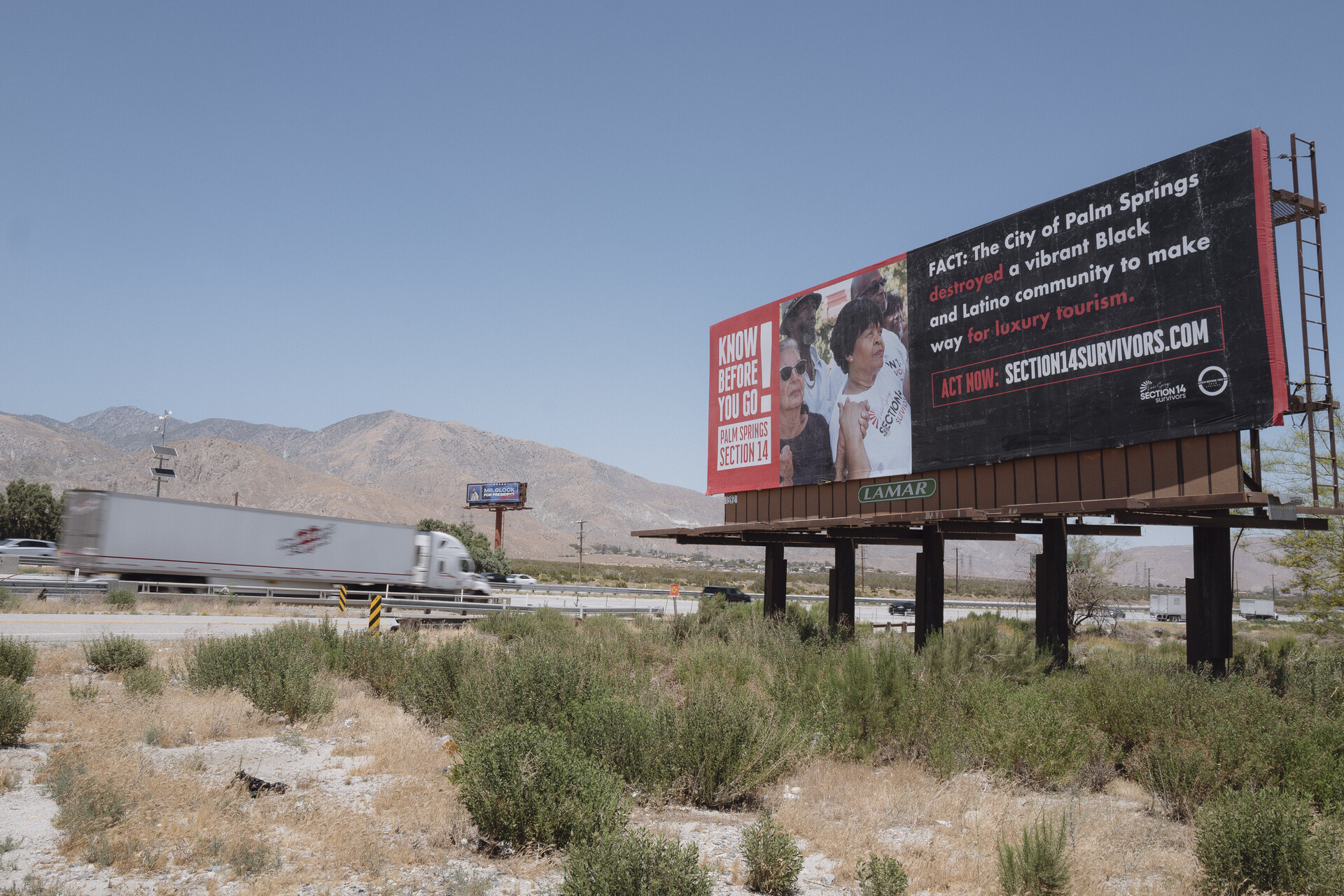
Cities and counties across the state are taking action at a local level, too. In the Bay Area, the city of Hayward apologized for its role in razing Russell City. In Los Angeles County, the board of supervisors voted to return Bruce’s Beach back to the Bruce family, who created a safe haven in Manhattan Beach for Black beachgoers in 1912. The Bruce family later sold it back to the county for $20 million. And earlier this year, a bill was introduced in the state Legislature that would provide reparations for Los Angeles families who were displaced by Dodgers Stadium in the 1950s.
The difference in Palms Springs is that the Section 14 neighborhood sits on tribal land owned by the Agua Caliente Band of Cahuilla Indians. The tribe still owns 31,000 acres of reservation land across Riverside County and is the largest landowner (PDF) in Palm Springs.
But in the 1940s, federal laws restricted tribes from leasing their land for more than five years. The short leasing agreement gave developers little reason to invest in that area.
Meanwhile, the city’s growing tourism industry was attracting minority and lower-income families to the area. Like many cities across the country, Palm Springs implemented racial housing covenants that prevented non-white residents from living in communities near white residents. Section 14 was one of the only neighborhoods in Palm Springs where people of color could live.
As a source of income, the tribe rented the land in Section 14 to the new wave of residents, many of whom were construction workers, gardeners and housekeepers.
Black residents fleeing Jim Crow laws and segregation in the south poured into Palm Springs, looking for a fresh start and economic opportunities. Pearl Devers, 73, said her father was one of them.
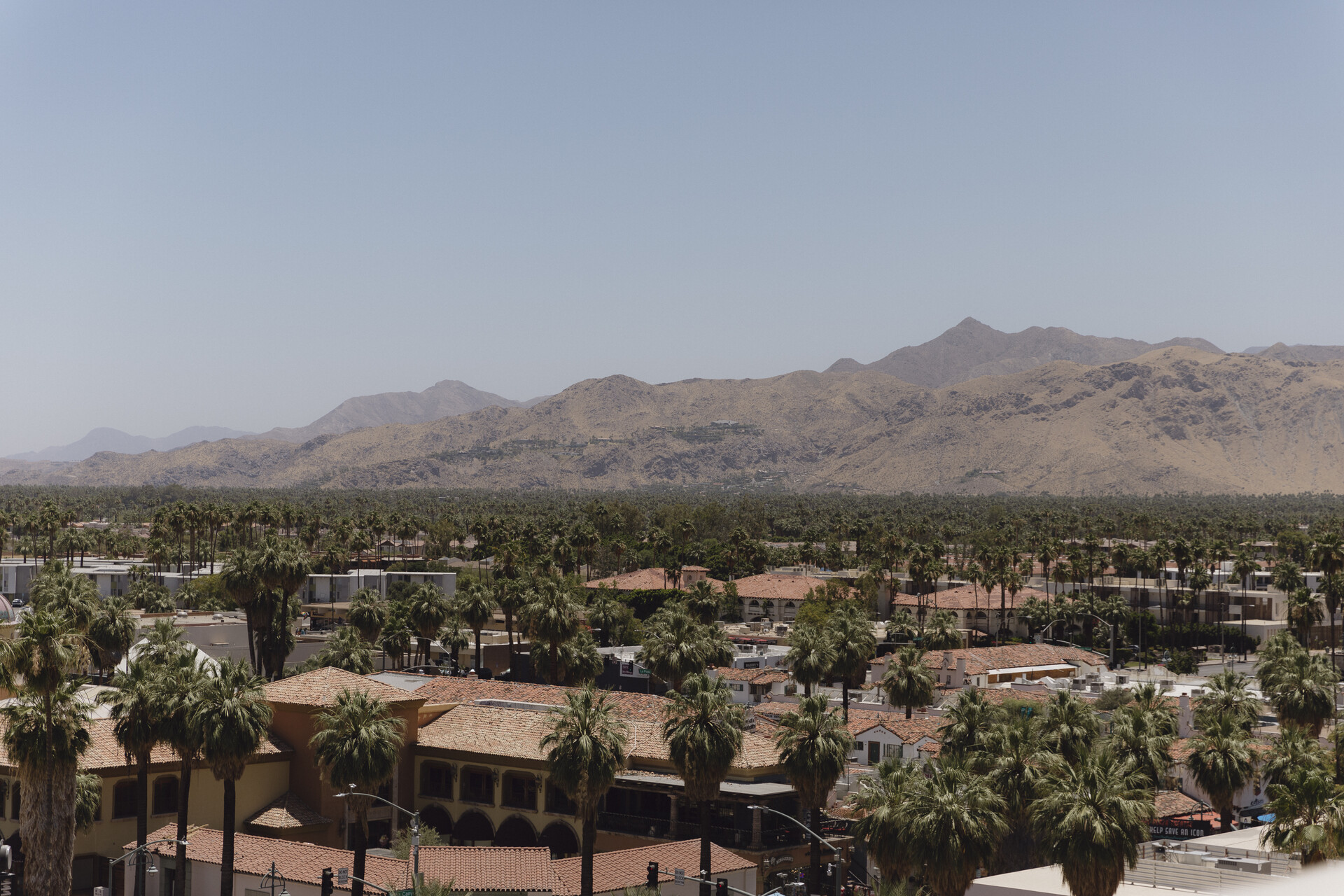
“He was a carpenter who built the hospital where my two siblings and I were born in Palm Springs,” she said. “And he also built our home here in Section 14.”
The Section 14 neighborhood quickly became home to the city’s Black and Latino residents, who described it as a peaceful multicultural community.
A ‘city-engineered holocaust’
Things began to change around 1959, when a federal law opened up leasing agreements for certain tribes, including the Agua Caliente tribe, from five years to 99 years. The longer lease terms and centrally located land under Section 14 became more attractive to the city of Palm Springs and developers.
By then, the city had begun evicting people from the neighborhood under a Conservatorship and Guardian program it had with members of the tribe, which forced tribe property owners to pay for court-appointed conservators to control the land, according to an article in the Smithsonian’s American Indian magazine. The tribe did not respond to several requests for comment.
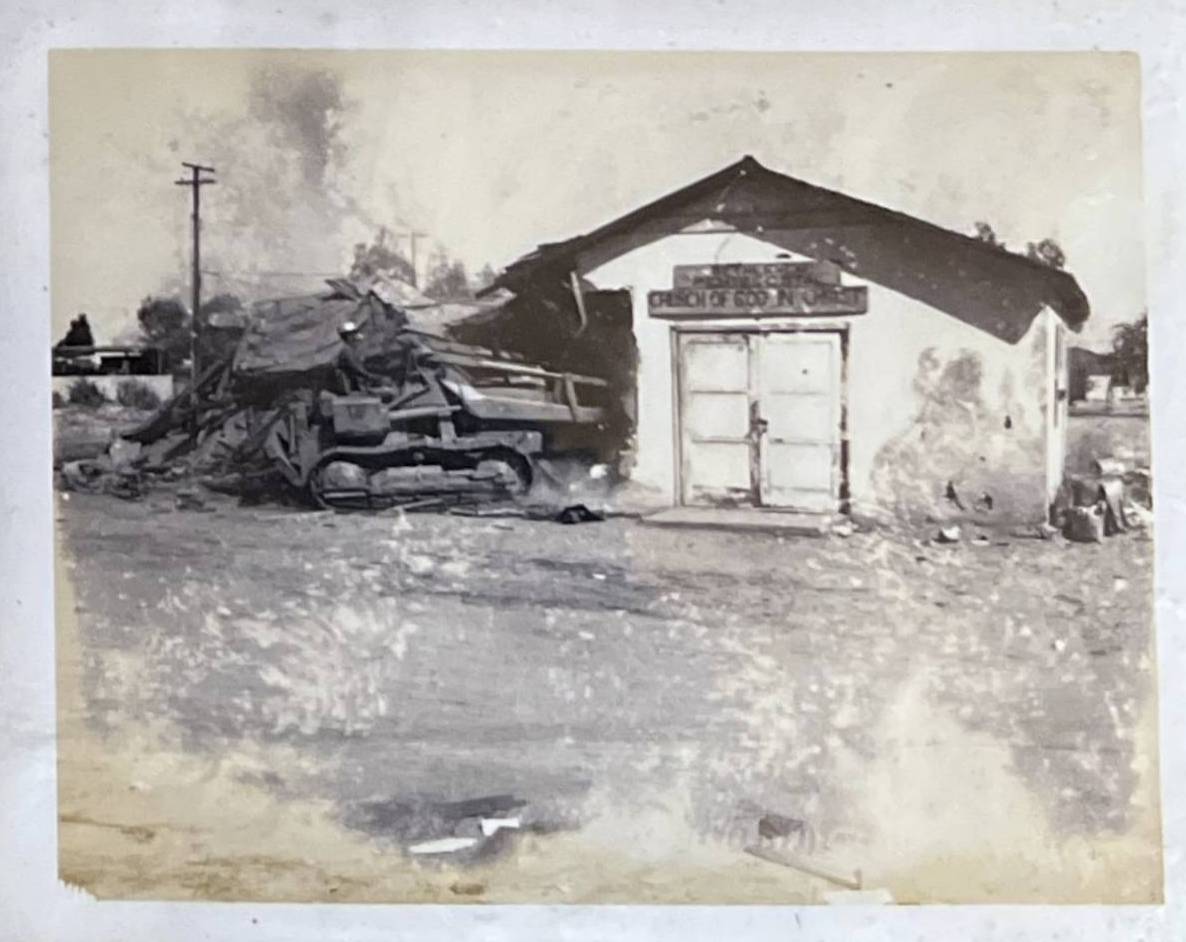
The city then directed its fire department to demolish homes and storefronts in the neighborhood. According to city documents, a total of 235 structures were bulldozed and burned to the ground from 1965 to 1967.
A 1968 report (PDF) from the state’s attorney general described it as a “city-engineered holocaust.” It found that the city did not give eviction notices to all the residents whose homes were burned down by the fire department. And in many cases when residents did receive an eviction notice, the city did not honor the 30-day eviction period. Nearly 1,000 residents were displaced and were never paid for their losses.
Margaret Godinez-Genera, 85, grew up in Section 14.
Her parents met in a neighboring town before moving to Palm Springs. They were part of the working class community that helped build Palm Springs into a luxurious vacation spot for Hollywood’s elite. Her father worked in construction, and her mother, a housekeeper, cleaned houses for celebrities.
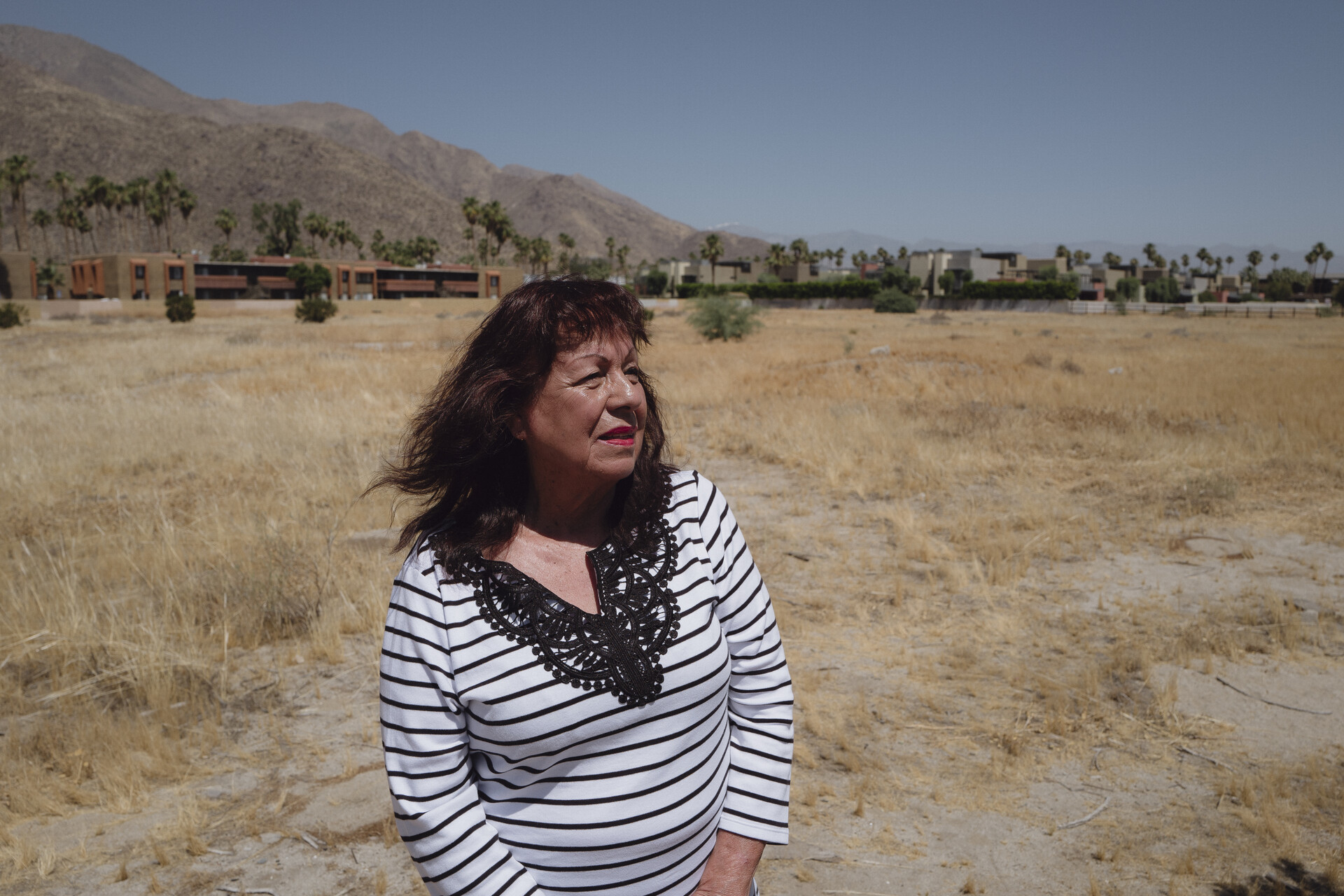
After struggling to find housing anywhere else in the city, they moved into Section 14.
“They bought a one bedroom and then my dad added the other bedrooms, and he made the kitchen bigger. He added a bathroom to it.” Godinez-Genera said. She lived there with her parents and two siblings. As a child, Gondinez-Genera said they would spend time in the city’s downtown and their local catholic church.
“We used to have Mexican fiestas,” she said. “We would even have movie stars come to our fiestas. They were so big. And they would come to our church, too. Paul Newman, Trini Lopez.”
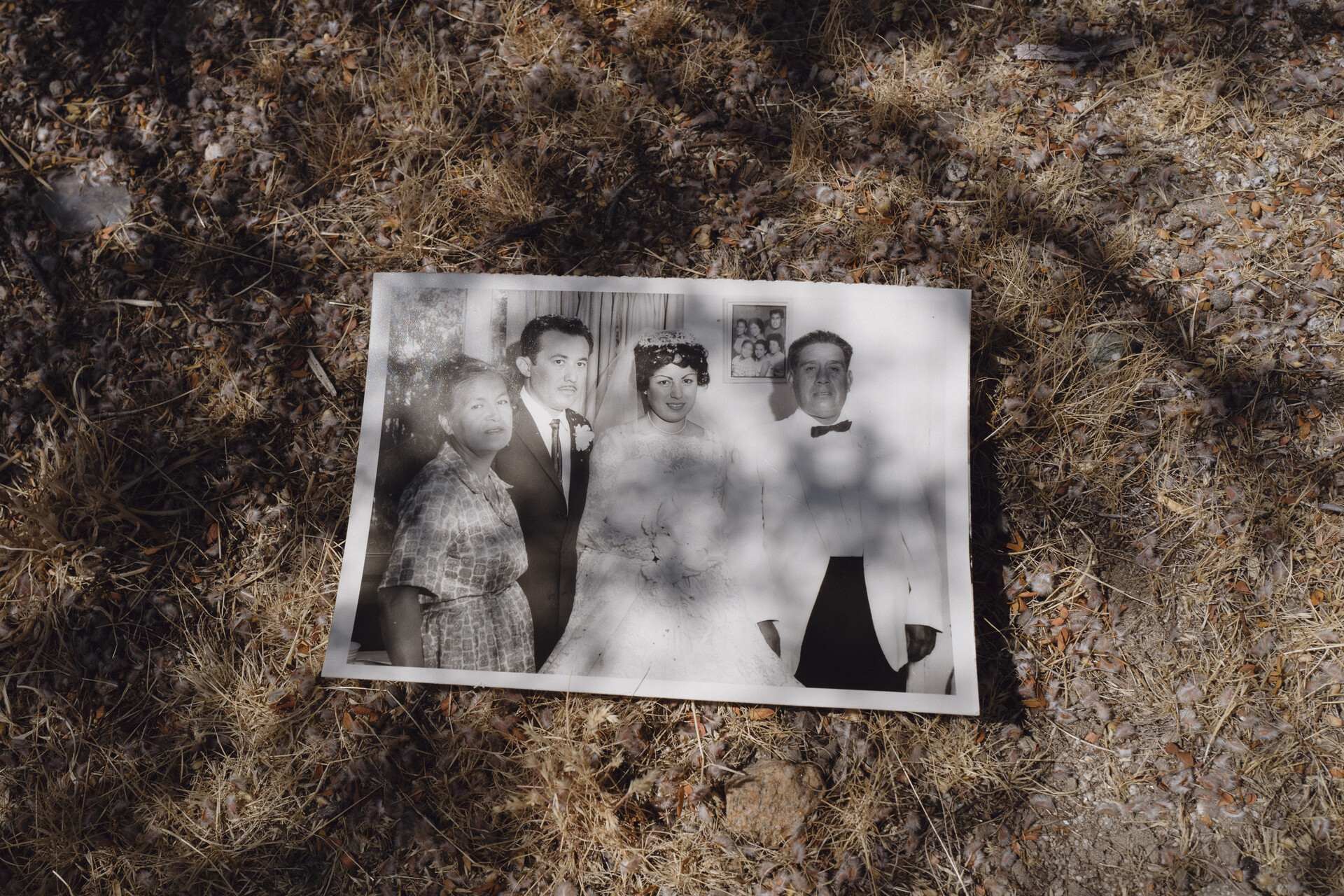
That church is also where she met her husband. They married in 1961 before renting a home across the street from her parents.
“We were just living our lives and helping the city,” she said. “We were workers, babysitters, veterans, all kinds of essential workers here.”
But despite their efforts to become contributing members of the Palm Springs community, Godinez-Genera said they faced a lot of racism. In addition to being confined to one part of the city, she remembers being afraid to walk into certain restaurants, fearing she would get kicked out just for being Mexican.
Around 1967, Godinez-Genera had heard rumors that people were being evicted, but said she and her husband never received any type of notice. But then one day, she woke up to the smell of smoke. It was coming from her neighbor’s home.
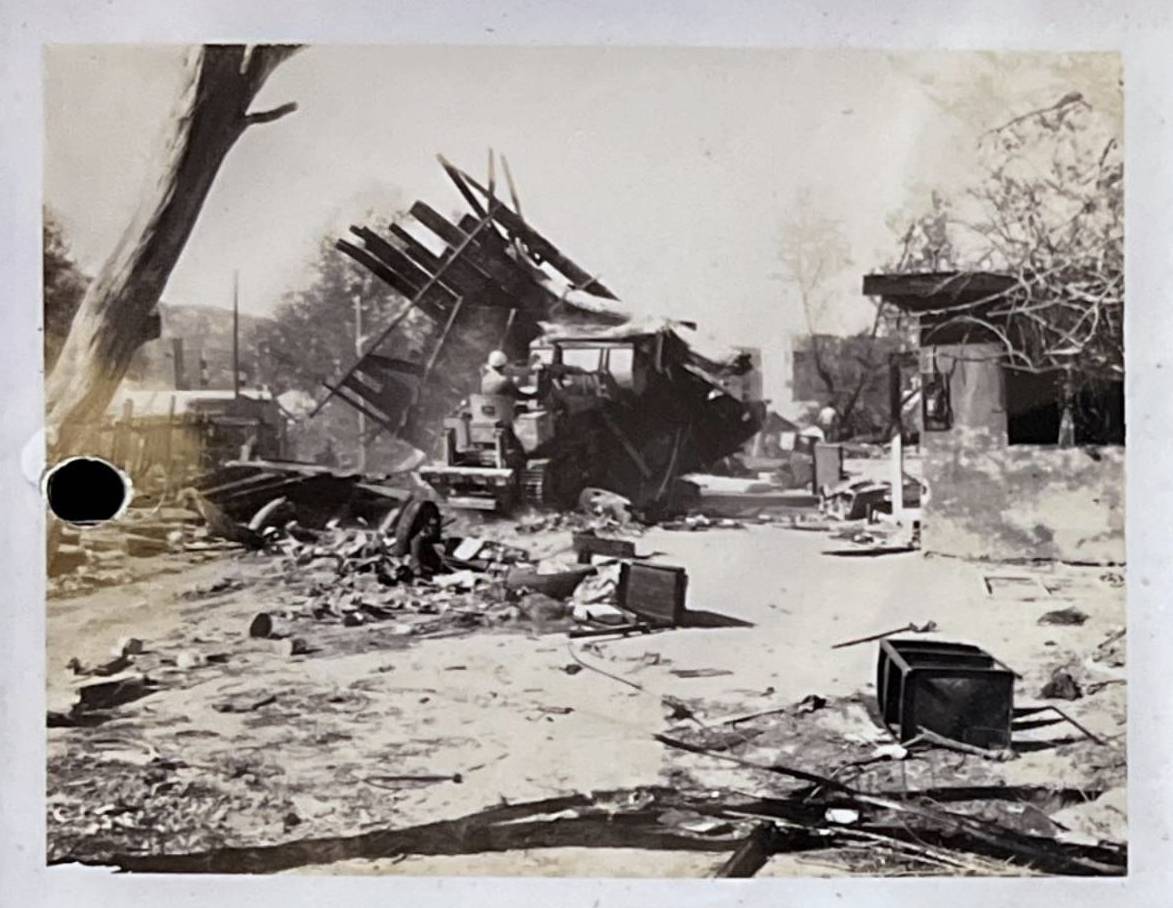
“I saw my neighbor’s houses burning and the bulldozers that would come. You could hear that loud noise from them.” she said. “Children were crying, it was horrible. It was like a war movie.”
Godinez-Genera and her husband packed their car with their belongings and their two young boys. To this day, she regrets leaving behind her son’s favorite rocking horse.
Pearl Devers, 73, also grew up in the neighborhood. Her mother was a domestic worker for celebrities like Lucille Ball and the Amelia Earhart family.
Devers said when the evictions started, she was too young to understand what was happening. But she does remember having to leave the neighborhood with her mom and two siblings. Her dad stayed behind in Section 14 to protect their home.
“It crushed him. He began to drink and literally succumbed to alcoholism,” Devers said. “He died a brokenhearted man and my mom ended up being a single mom to fend for the rest of us.”
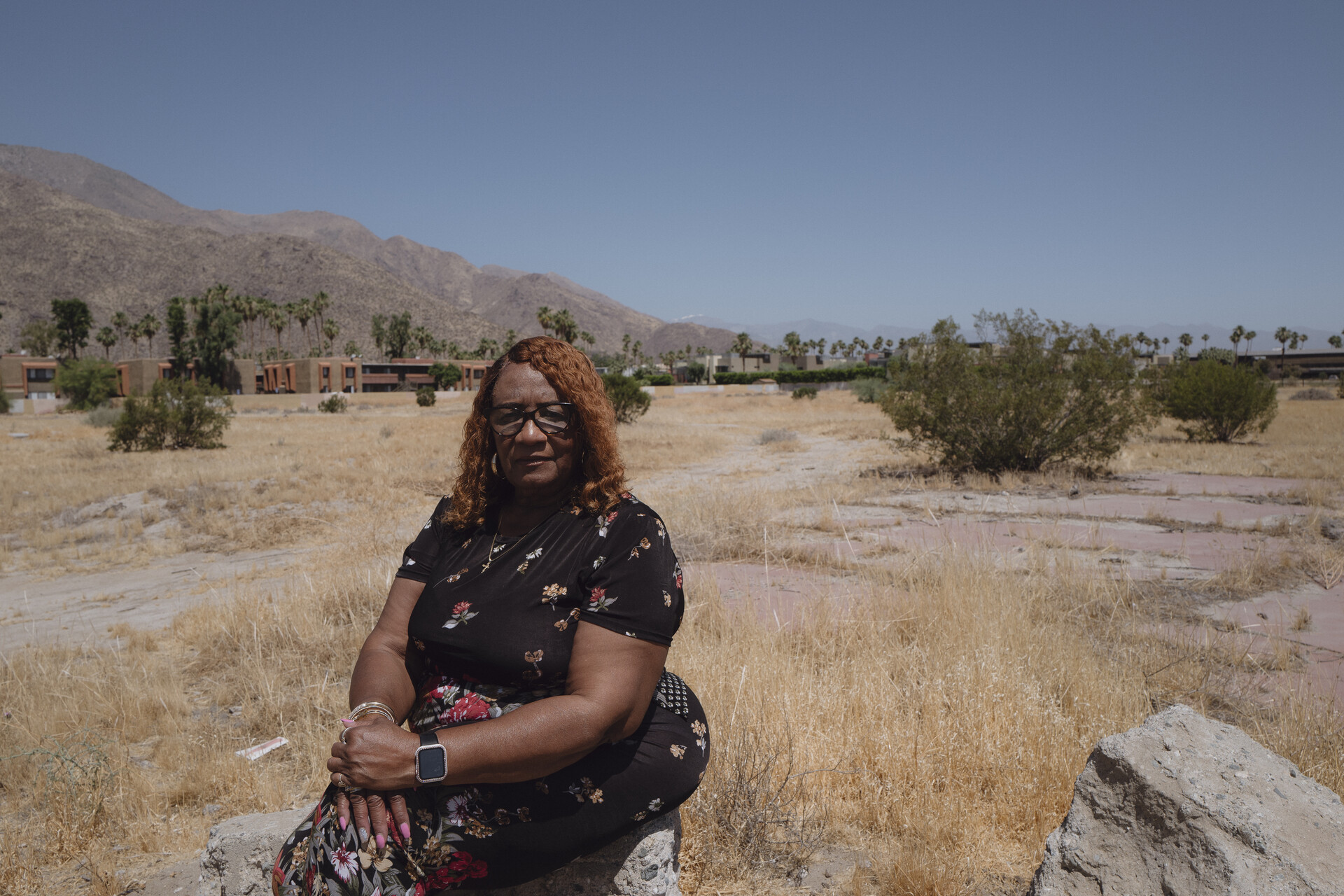
Her father tried to get a loan to move their home to another area but was denied because he was Black.
Devers said the money from their family home could have helped pay for her and her sister’s college tuition.
State Sen. Steven Bradford, a member of California’s Legislative Black Caucus, prioritized a package of bills, including one that would help compensate Black families who had property taken from them by the government.
“They have denied these families generational wealth. These families could have all these homes for over 60 years now on this property,” Bradford said. “l imagine the value that they would have, the equity that they’ll have in this property. And, they’ve been denied that.”
‘Right the wrongs of the past’
Now in her 70s, Devers is leading the group of survivors and descendants seeking restitution for the generational wealth they say was stolen from them by the city of Palm Springs.
“The reality is we are very much focused on what happened in Palm Springs and how we can right the wrongs of the past, address the inequities of the time, and really move forward in a healing way,” said Palm Springs Mayor Jeffrey Bernstein.



